Previously, using Edge-TTS for voice synthesis was very smooth and rarely encountered issues. Unfortunately, since the end of last year, it has frequently reported 403 errors. Initially, this only occurred in China, and using a foreign IP could temporarily resolve it, but now this error appears globally. It seems even a large company like Microsoft can't handle everyone "overusing the free service."
If you still want to use Edge-TTS, use it sparingly, especially avoiding frequent operations from the same IP. Otherwise, Microsoft's server will directly return a 403 error. For clarity, the software will show a "rate limit error." Here are two solutions:
- Try deploying the interface on Cloudflare to leverage its dynamic features and reduce 403 errors. For details, refer to: https://pvt9.com/edgettscf
- Alternatively, continue using it locally but pair it with dynamic proxies, meaning changing the IP for each request. For specific steps, check this article: https://pvt9.com/edgetts-proxy
Using Local Voice Synthesis Models
Besides Edge-TTS, you can use open-source local voice synthesis models like GPT-SoVITS, ChatTTS-ui, Fish-TTS, F5-TTS, CosyVoice, Clone-voice, KokoroTTS, etc. These are free and can be deployed on your computer. However, this requires extra time for configuration and certain hardware and technical skills.
To try it out, refer to this tutorial: https://pvt9.com/gptsovits. More explanations are available in the left sidebar of the page.
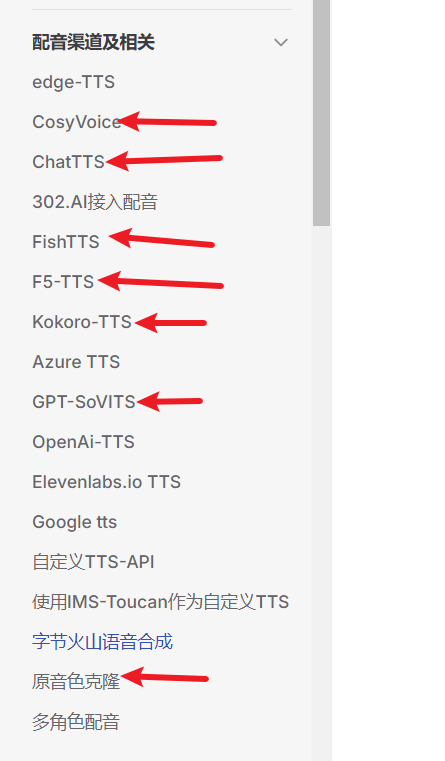
Using Online Voice Synthesis APIs as Alternatives
If your hardware isn't sufficient or you don't want the hassle of local deployment, you can opt for online voice synthesis APIs like OpenAI TTS, Azure TTS, ByteDance Volcano Voice Synthesis, etc.
However, using OpenAI TTS or Azure TTS directly in China requires bypassing restrictions. Their free tiers are very limited, and paid plans need a foreign phone number and credit card, which is cumbersome. It's recommended to use relay services for OpenAI TTS or Azure TTS that are accessible within China for greater convenience.
If using the official OpenAI TTS, simply go to Menu → TTS Settings → OpenAI TTS API in the software, enter your SK in the SK text box, and no additional settings are needed. But remember, bypassing restrictions is required in China.
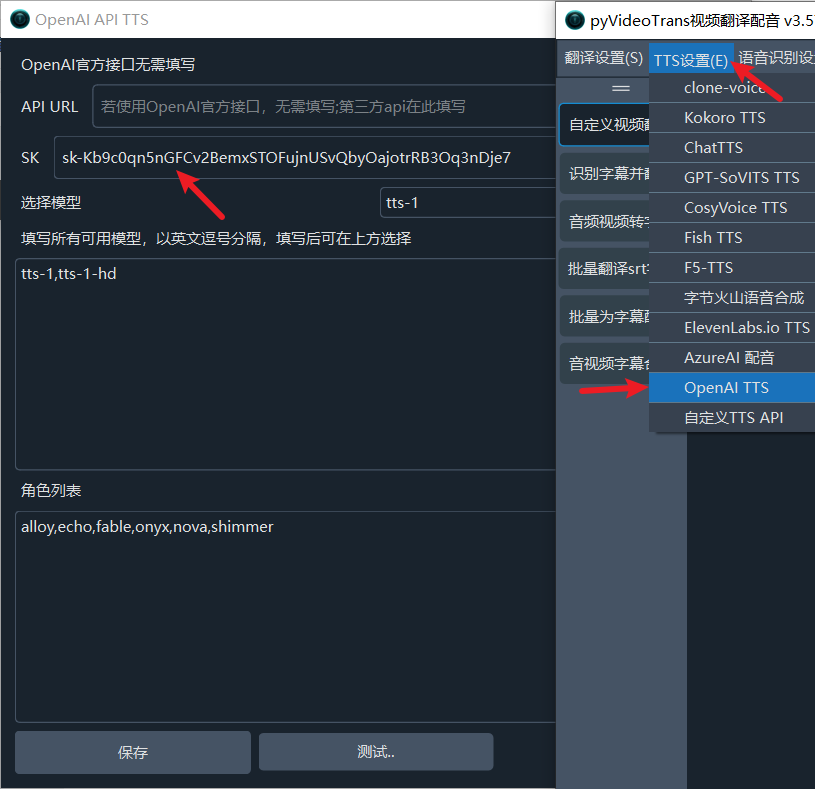
Below are step-by-step instructions for using third-party relay services for OpenAI TTS, Azure TTS, and ByteDance Voice Synthesis.
Using 302.AI or Other Third-Party OpenAI TTS Relay APIs
Registration and login URL (with $1 credit): https://share.302.ai/pyvideo
The steps are straightforward:
- In the software, go to Menu → TTS Settings → OpenAI TTS API and set the API URL to
https://api.302.ai/v1. If using another relay service, enter their provided URL, usually ending with/v1. - In the SK text box, enter the API Key created on 302.AI. For other services, use their provided Key.
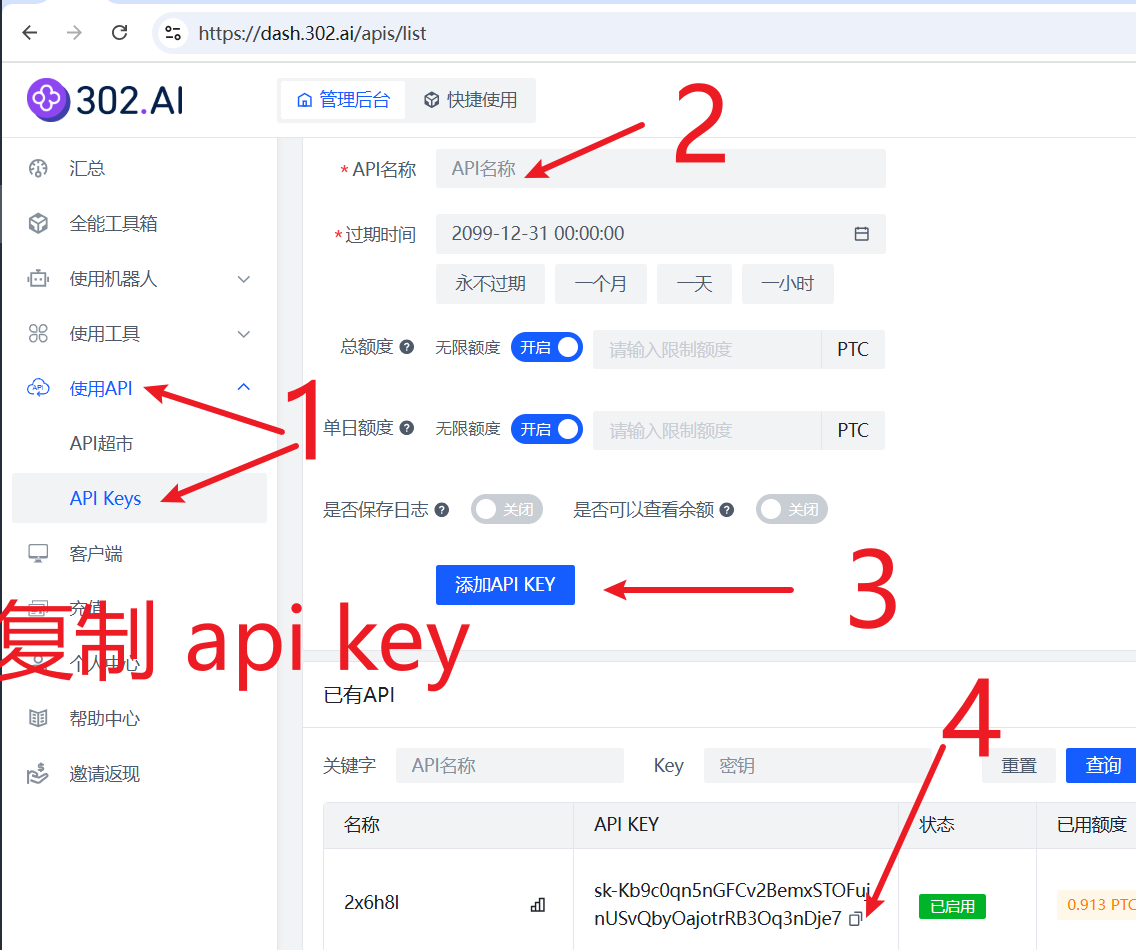
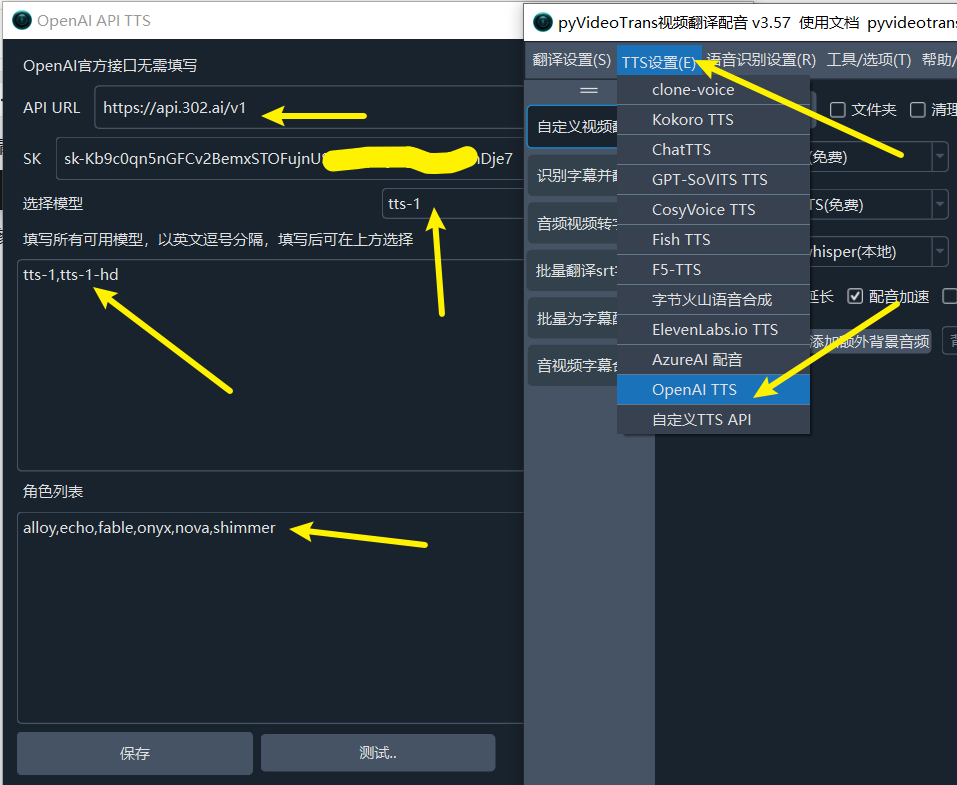 Test it; if the voice audio plays automatically, the setup is successful. Then, select OpenAI TTS in the software's main interface under voice synthesis channels. Supported voices include:
Test it; if the voice audio plays automatically, the setup is successful. Then, select OpenAI TTS in the software's main interface under voice synthesis channels. Supported voices include: alloy, ash, coral, echo, fable, onyx, nova, sage, shimmer.
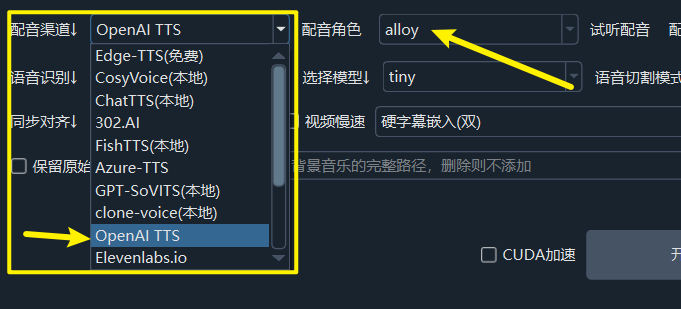
Using 302.AI Relay for Azure TTS
Registration and login URL (with $1 credit): https://share.302.ai/pyvideo
OpenAI TTS only offers 9 voices, and Chinese pronunciation can sound slightly unnatural. If that's not satisfactory, try Azure TTS. It's a Microsoft product with more voice options and better quality than Edge-TTS. However, direct use in China requires a foreign credit card, which is inconvenient. Using 302.AI's relay API is a good alternative.
Steps:
- Create a Key on 302.AI.
- In the software, go to Menu → Translation Settings → 302.AI and enter the Key. Note: This time, it's under the "Translation Settings" menu in the "302.AI" option.
 After entering, you can use all Azure TTS voice roles. Additionally, 302.AI also relays ByteDance Voice Synthesis, so ByteDance voices are available directly.
After entering, you can use all Azure TTS voice roles. Additionally, 302.AI also relays ByteDance Voice Synthesis, so ByteDance voices are available directly. 
Using ByteDance Voice Synthesis Separately
There's a detailed tutorial for ByteDance Voice Synthesis: https://pvt9.com/volcenginetts.
Note: By default, only general male and female voices are available. For other voices, you need to purchase them separately on ByteDance's official website with a monthly fee, which may not be cost-effective for occasional use. It's recommended to use 302.AI as mentioned above for direct access to various ByteDance voices, which is more convenient.
